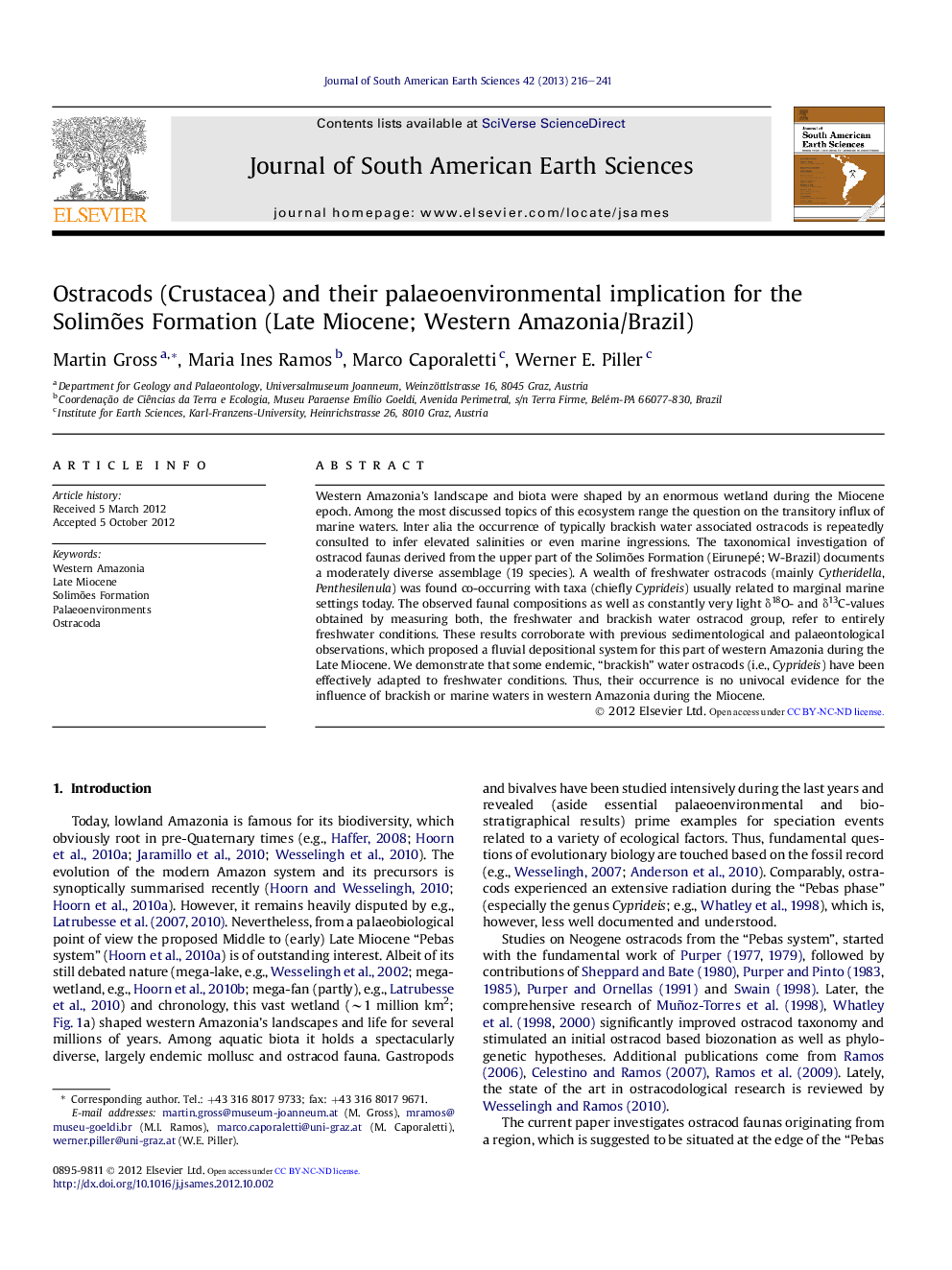| کد مقاله | کد نشریه | سال انتشار | مقاله انگلیسی | نسخه تمام متن |
|---|---|---|---|---|
| 6431480 | 1635167 | 2013 | 26 صفحه PDF | دانلود رایگان |

Western Amazonia's landscape and biota were shaped by an enormous wetland during the Miocene epoch. Among the most discussed topics of this ecosystem range the question on the transitory influx of marine waters. Inter alia the occurrence of typically brackish water associated ostracods is repeatedly consulted to infer elevated salinities or even marine ingressions. The taxonomical investigation of ostracod faunas derived from the upper part of the Solimões Formation (Eirunepé; W-Brazil) documents a moderately diverse assemblage (19 species). A wealth of freshwater ostracods (mainly Cytheridella, Penthesilenula) was found co-occurring with taxa (chiefly Cyprideis) usually related to marginal marine settings today. The observed faunal compositions as well as constantly very light δ18O- and δ13C-values obtained by measuring both, the freshwater and brackish water ostracod group, refer to entirely freshwater conditions. These results corroborate with previous sedimentological and palaeontological observations, which proposed a fluvial depositional system for this part of western Amazonia during the Late Miocene. We demonstrate that some endemic, “brackish” water ostracods (i.e., Cyprideis) have been effectively adapted to freshwater conditions. Thus, their occurrence is no univocal evidence for the influence of brackish or marine waters in western Amazonia during the Miocene.
⺠Miocene ostracod faunas from Amazonia (Solimões Fm.; Eirunepé/Brazil) were examined. ⺠Freshwater and “brackish” water elements are found regularly co-occurring. ⺠The isotopic composition of both groups indicates entirely freshwater conditions. ⺠The presence of “brackish” water taxa is no evidence for the influx of marine waters.
Journal: Journal of South American Earth Sciences - Volume 42, March 2013, Pages 216-241